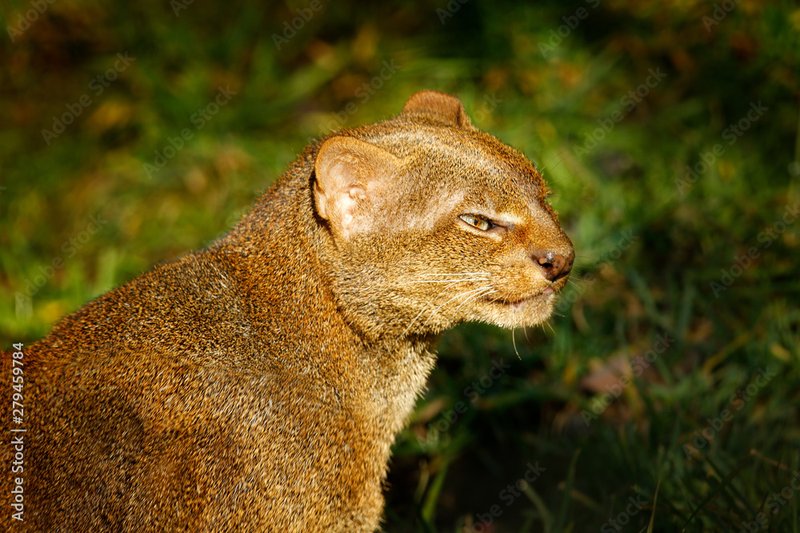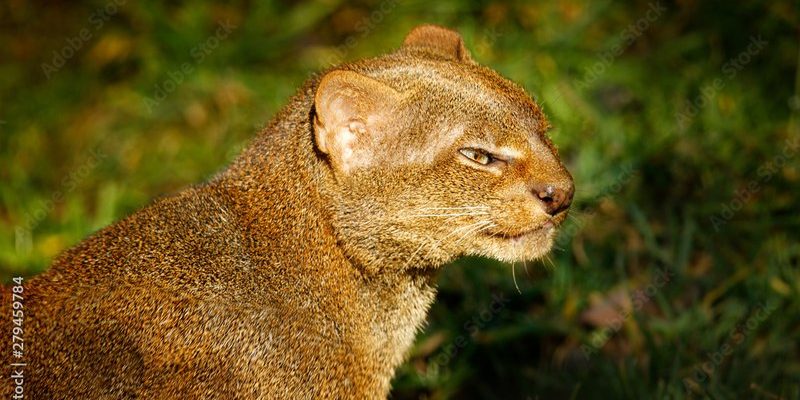
Imagine a sleek, elegant cat that doesn’t quite fit the mold of your typical feline. That’s the jaguarundi for you! Often described as having a playful nature, this wild cat stands out not just for its appearance, but also for its fascinating behaviors and habitat. With a lithe body, short legs, and a unique long tail, the jaguarundi resembles a cross between a domestic cat and a small puma. Curious about what makes this creature so special? Let’s dive deeper.
The jaguarundi, scientifically known as Puma yagouaroundi, has captured the interest of wildlife enthusiasts and researchers alike. Native to the Americas, it roams from southern Texas all the way to South America. Unlike many other wild cats, these guys are more social and can sometimes even be spotted in pairs or small groups. This adaptability and unique behavior make them both intriguing and endearing.
Throughout this article, we’ll explore all aspects of the jaguarundi, from its physical characteristics to its habitat and diet. You might be surprised by just how much there is to learn about this remarkable feline!
Physical Characteristics of the Jaguarundi
The jaguarundi is a compact cat, measuring about 50 to 77 cm in length, not including its impressive 60 cm tail. They typically weigh between 3.5 to 9 kg, which makes them smaller than their larger cousins, like the jaguar or puma. Their short legs and long body make them incredibly agile, allowing them to move quickly and stealthily through their environment. With fur that varies from a reddish-brown to a grayish hue, they seamlessly blend into the forests and grasslands they call home.
One striking feature of the jaguarundi is its elongated head and small, rounded ears. Unlike many wild cats, its face lacks the prominent whisker pads, giving it a more streamlined look. Their eyes, which range from amber to green, are set wide apart, providing a broad field of vision. This is essential for spotting prey in the dense foliage of their habitats.
Another unique aspect of the jaguarundi is its tail. The long, slender tail is nearly as long as its body and plays a key role in balance and agility. This feline uses its tail to stabilize itself as it navigates through trees or leaps across rocky areas. So, when you see one of these cats in action, pay close attention to its movements—every flick of the tail tells a story!
Habitat and Geographic Distribution
The jaguarundi is a versatile cat that thrives in a variety of habitats. From dense tropical rainforests to dry savannas, it’s adaptable and can be found in both lowland and upland areas. They prefer regions with plenty of cover, such as thick brush, bushes, and small trees, which provide them with ample hiding spots and hunting grounds. You’ll often find them near bodies of water, where they can hunt for fish, rodents, and aquatic birds.
Geographically, the jaguarundi ranges from southern Texas in the United States, through Central America, and down to the northern parts of South America, including Colombia and Venezuela. However, they are elusive creatures and prefer to stay hidden from human sight. As urban areas expand, their habitats are increasingly threatened, leading to concerns about their conservation status.
The overlap of their habitat with human activities can sometimes lead to conflict. However, jaguarundis are generally adaptable and manage to coexist with humans when we give them the chance. Whether they’re navigating through suburban areas or hunting in rural landscapes, their resilience is truly impressive.
Diet and Hunting Behavior
When it comes to meals, the jaguarundi is quite the opportunistic feeder. Their diet mainly consists of small mammals, birds, and reptiles. They’re also known to catch fish, especially when near water sources. Their hunting technique is fascinating; these cats prefer to hunt during the day, which sets them apart from many other wild felines that operate during the night.
Jaguarundis are agile and stealthy hunters. They often use a stalking method, crouching and moving quietly through the underbrush to avoid detection. Once they spot their prey, they can sprint quickly—up to 50 km/h—to catch it. This speed, combined with their lightweight body, makes them effective hunters.
Interestingly, they can also climb trees to hunt birds or escape predators. They’re not just good at hunting; they’re also resourceful, often caching their food in safe spots to return later. This behavior is particularly useful when food is scarce, allowing them to survive in challenging conditions.
Social Behavior and Reproduction
Unlike many solitary wild cats, jaguarundis exhibit a more social behavior. They are often seen in pairs or small family groups, particularly during the mating season. These cats communicate through a series of vocalizations, including chirps and growls. This social aspect makes them unique and adds to their charm.
When it comes to reproduction, the mating season typically occurs from late summer to early fall. After a gestation period of about 70 to 75 days, the female generally gives birth to 1 to 4 kittens. The young are born blind and rely on their mother for everything in those initial months. They begin exploring their surroundings around 2 months old and are weaned by 3 months.
Raising their young is a significant commitment. Jaguarundi mothers teach their kittens essential skills, such as hunting and self-defense, through play. This playful interaction not only builds hunting skills but also strengthens the bond between mother and offspring. As the kittens grow, they learn to navigate their environment and become more independent, eventually venturing out on their own.
Conservation Status
The conservation status of the jaguarundi is a topic of concern. While they currently have a stable population in some regions, habitat loss and poaching pose serious threats. The expansion of agriculture and urban areas continues to encroach upon their natural habitats, putting pressure on their living space. Additionally, these cats sometimes fall victim to hunting due to misconceptions about their behavior and competition with livestock.
Efforts are being made to study and protect the jaguarundi. Wildlife organizations are working tirelessly to preserve their habitats and raise awareness about their ecological role. Conserving forests and creating wildlife corridors can help reduce human-wildlife conflict and allow these elusive felines to thrive.
You might wonder how you can help. Supporting wildlife conservation efforts and spreading the word about the importance of protecting natural habitats can make a difference. Every small action counts in preserving the jaguarundi and other wildlife for future generations.
Interesting Facts About the Jaguarundi
| Common Name: | Jaguarundi |
| Scientific Name: | Puma yagouaroundi |
| Size: | 50-77 cm body length; 60 cm tail |
| Weight: | 3.5-9 kg |
| Habitat: | Tropical forests, savannas, and near water bodies |
| Diet: | Small mammals, birds, reptiles, and fish |
| Speed: | Up to 50 km/h |
| Lifespan: | Up to 15 years in the wild |
FAQ
What does a jaguarundi look like?
The jaguarundi has a sleek, elongated body with short legs and a long tail. Their fur can vary in color from reddish-brown to grayish, which helps them blend into their surroundings. Unlike many wild cats, they have small, rounded ears and an elongated head, giving them a distinct appearance.
Where can I find jaguarundis in the wild?
You can find jaguarundis in various habitats across the Americas, including southern Texas, Central America, and parts of South America. They prefer areas with dense vegetation, such as forests, grasslands, and regions close to water sources. However, they are elusive and may be difficult to spot.
Are jaguarundis solitary animals?
While many wild cats are solitary, jaguarundis often display more social behavior. They can be seen in pairs or small family groups, especially during the mating season. They communicate using vocalizations and body language, indicating a level of social interaction uncommon in other wild cats.
What do jaguarundis eat?
Jaguarundis are opportunistic feeders, primarily consuming small mammals, birds, and reptiles. They are also known to catch fish when near water. Their hunting technique is unique, as they often hunt during the day, which is different from the nocturnal habits of many other wild cats.
How do jaguarundis reproduce?
The mating season for jaguarundis typically occurs in late summer to early fall. After a gestation period of about 70 to 75 days, females give birth to 1 to 4 kittens. The mother plays a crucial role in raising her young, teaching them hunting skills and promoting independence.
What threats do jaguarundis face?
Jaguarundis face several threats, including habitat loss due to urban expansion and agriculture. They can also be hunted due to misconceptions and competition with livestock. Conservation efforts are underway to protect their habitats and raise awareness about their ecological importance.
How long do jaguarundis live in the wild?
In the wild, jaguarundis can live up to 15 years, although their lifespan can be shorter due to various threats, including predation and human activities. Protecting their habitats is essential for ensuring their survival and longevity.
Are jaguarundis good climbers?
Yes! Jaguarundis are agile climbers, capable of navigating trees with ease. This skill allows them to escape predators and hunt birds. Their physical structure, including their long tails, aids in balance, making them effective climbers in their preferred habitats.
Can jaguarundis adapt to urban environments?
Jaguarundis are quite adaptable and can sometimes coexist with humans in urban areas. However, they thrive best in natural habitats with plenty of cover. Ensuring that their habitats are preserved is crucial for their long-term survival as urbanization continues to expand.
How can I help conserve jaguarundis?
You can help conserve jaguarundis by supporting wildlife conservation organizations, spreading awareness about their importance, and advocating for habitat protection. Every small action contributes to the larger goal of preserving these remarkable cats for future generations.

